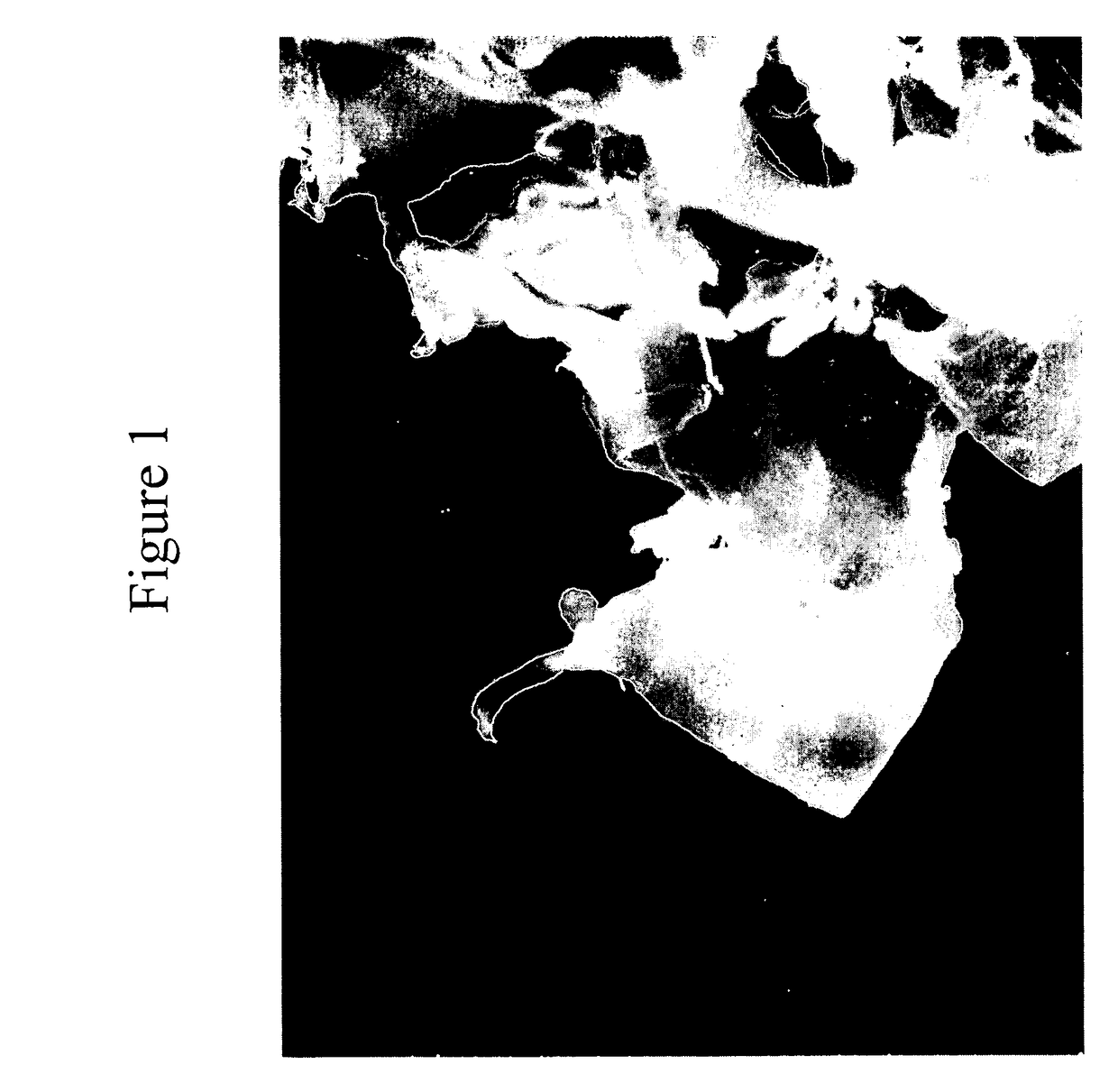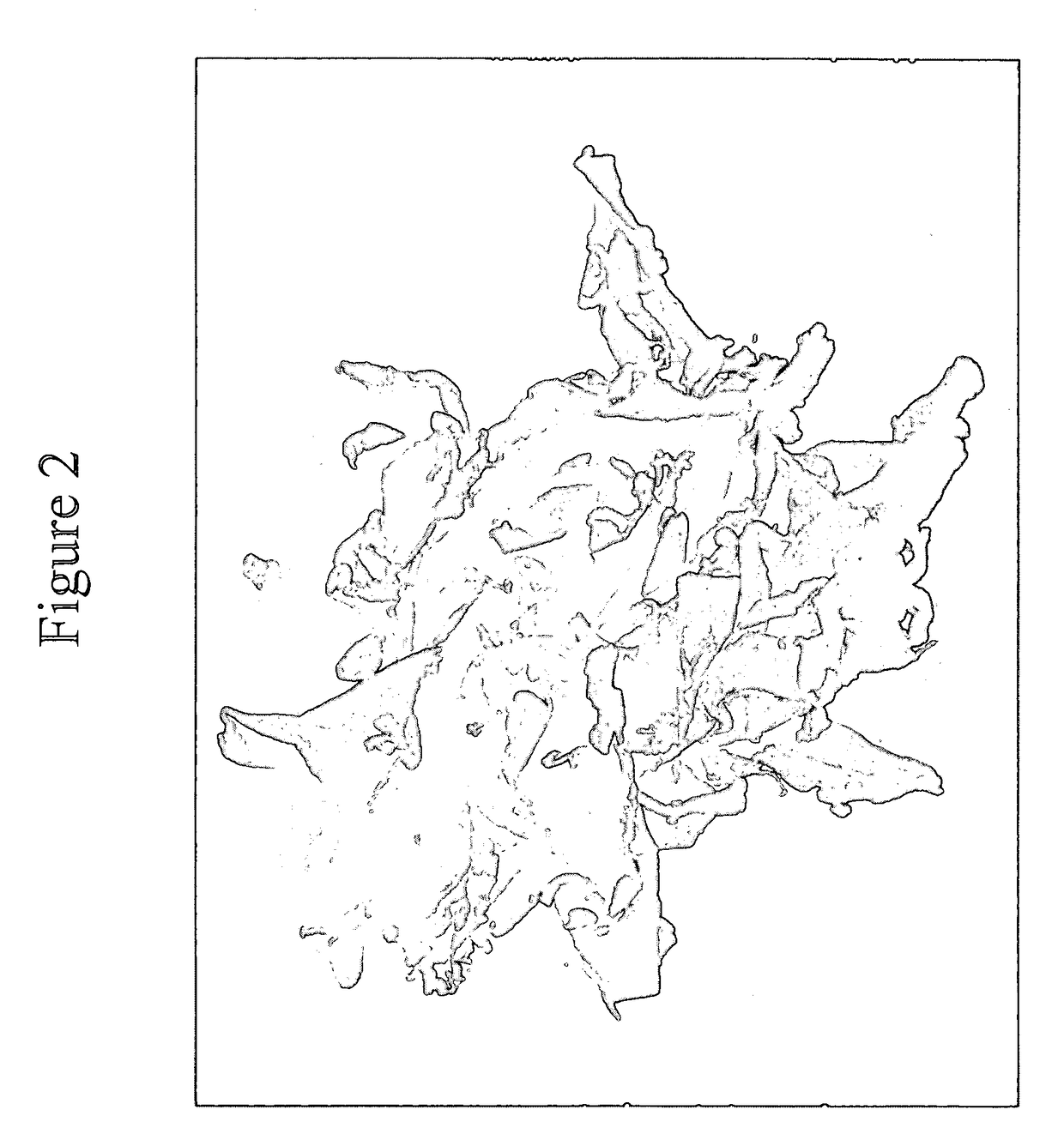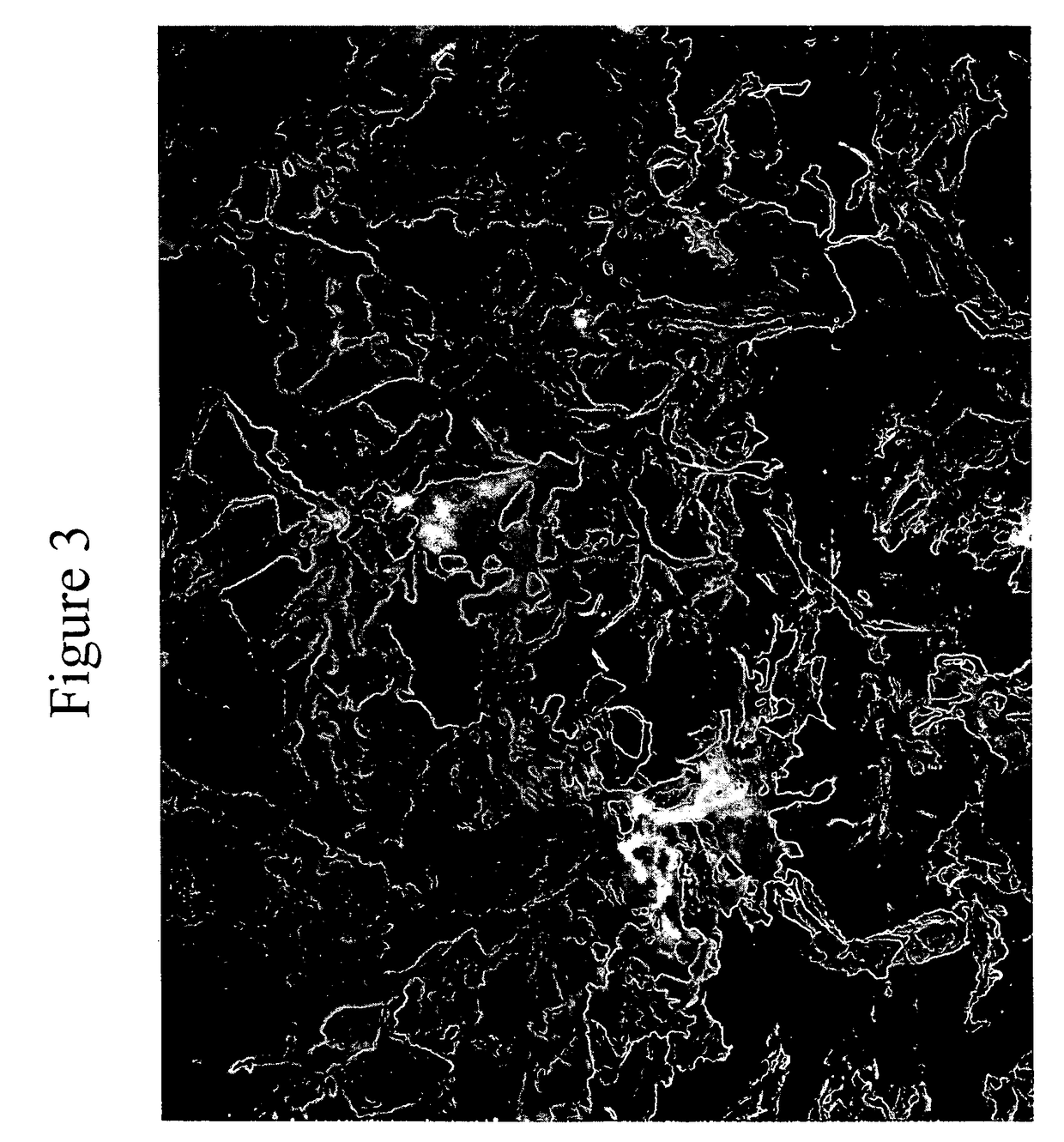Hemostatic compositions and devices
a composition and composition technology, applied in the direction of filtration separation, extracellular fluid disorder, separation process, etc., can solve the problems of inability to achieve homogeneous paste, inability to obtain optimal powder:liquid ratio, time and mechanical effort required to form paste, etc., to achieve the effect of improving the absorption of physiological fluids
- Summary
- Abstract
- Description
- Claims
- Application Information
AI Technical Summary
Benefits of technology
Problems solved by technology
Method used
Image
Examples
example 1
[0048]A total of ten samples of packed particles were prepared as follows. 0.5 gram of dry, non-sterile, milled, absorbable hemostatic collagen powder was placed into a 1.25-inch diameter mold. A cylindrical die (¼ inch) was inserted into the mold. A Carver® hydraulic press was used to compress the die into the mold with forces ranging from 1 to 5 tons. Two samples were compressed at each load. The force was maintained for 2 minutes and then was released in order to remove the die from the mold. The bottom plate of the mold was subsequently removed. The dry discs so formed were separated by pressing the die through the mold. The resulting discs were placed on a cutting surface and cut into small pellets in the shape of square diamonds and squares ( 1 / 16-⅛″) using a rotary cutter. The density, pore volume and median pore diameter were determined by mercury intrusion porosimetry methods as noted by S. Westermarck, in “Use of Mercury Porosimetry and Nitrogen Adsorption in Characterisat...
example 2a
Hemostatic Performance of Compressed, Non-Hydrated Discs in Porcine Splenic Incision Model
[0053]A porcine spleen incision model was used for hemostasis evaluation of non-hydrated compressed discs prepared in Example 1. A linear incision of 1.5 cm with a depth of 0.3 cm was made with a surgical blade on a porcine spleen. The discs were applied directly onto the incision sites. After application of the test article, digital tamponade was applied to the incision for 2 minutes. The hemostasis was then evaluated. Additional applications of digital tamponade for 30 seconds each time were used until complete hemostasis was achieved. Fabrics failing to provide hemostasis within 12 minutes were considered to be failures. Table 2 lists the results of the evaluation.
example 2b
In Vivo Hemostatic Performance of Materials Prepared Above in Porcine Splenic Biopsy Punch Model
[0054]A porcine spleen biopsy punch model was used for evaluation of the hemostatic properties of homogenous pastes formed by additional of the saline to the discs prepared in Example 1. A 6-mm biopsy punch was used to cut a tissue flap 3 mm deep. The tissue flap was cut out and 0.4 ml of the test materials was applied to the wound site. Manual compression was held over the wound site for 2 minutes. The wound site was then observed for up to 3 minutes for signs of bleeding. If bleeding was observed, additional applications of manual compression for 30 seconds each time were used until complete hemostasis was achieved. Table 2 lists the results of the evaluation. Results are represented as an average values for all samples tested.
[0055]
TABLE 2Time to Hemostasis(mins:seconds)Compression Force2A2B(ton)Non-hydrated pelletHydrated paste03:00 (n = 4)N / A13:12 (n = 4)2:05 (n = 3)23:03 (n = 4)2:15...
PUM
| Property | Measurement | Unit |
|---|---|---|
| median pore diameter | aaaaa | aaaaa |
| particle diameter | aaaaa | aaaaa |
| median diameter | aaaaa | aaaaa |
Abstract
Description
Claims
Application Information
 Login to View More
Login to View More - R&D
- Intellectual Property
- Life Sciences
- Materials
- Tech Scout
- Unparalleled Data Quality
- Higher Quality Content
- 60% Fewer Hallucinations
Browse by: Latest US Patents, China's latest patents, Technical Efficacy Thesaurus, Application Domain, Technology Topic, Popular Technical Reports.
© 2025 PatSnap. All rights reserved.Legal|Privacy policy|Modern Slavery Act Transparency Statement|Sitemap|About US| Contact US: help@patsnap.com



